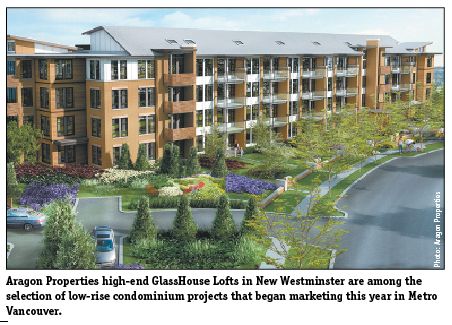Opinion:The Competition Bureau is right to open the MLS
Chris Seepe
Other

The Competition Bureau, an independent federal agency responsible for the administration and enforcement of the Competition Act, is at war with Canadian organized real estate.
The bureau claims, “The overwhelming majority of real estate transactions in Canada are brokered through the MLS system. Realtors must agree to comply with CREA’s restrictions on the service options they provide to Canadian consumers …(the bureau) wants these anti-competitive rules removed so that consumers can benefit from greater choice.”
The bureau is right to open the MLS, but for the wrong reasons.
Obtaining information about a property and a seller from the MLS doesn’t empower a person with the skill and knowledge needed to make an informed buy or sell decision. Just having a grasp of the 135 acts and codes that affect Canadian real estate is daunting.
If the MLS was opened up, the public would quickly learn the hard way about the true value of using a Realtor. It would also substantially raise the bar of skill, duty and professionalism of Realtors; not because most Realtors aren’t professional, but because a great many of them take only three two-week courses before they are licensed to trade in real estate. Six weeks’ training is likely not enough to properly prepare them to sell an oil refinery, farm, retail plaza or arguably the most litigious-prone property of all – cottages.
The Toronto Real Estate Board’s membership is currently about 38,000. Of these, almost 4,000 became Realtors and 1,320 left the profession between August 2012 and June 2013. This kind of turnover makes the odds high that many members of the public will meet a Realtor who, though licensed, is still not qualified to assist a family investing their life savings in what is likely to be the most important financial decision they’ll ever make; and that doesn’t include the exponential complexities of commercial real estate.
So what’s any of that got to do with opening up the MLS to the public?
Everything.
The book, music, television and movie industries (all intellectual properties like the MLS) are going through a world-wide sea change, with traditional ways of doing things being violently uprooted. This is primarily because technology has empowered end users to bypass traditional industry distribution channels, regulators and infrastructure. This is exactly what the bureau’s challenge is about – empowering the public to bypass the gatekeepers of privileged MLS data.
The bureau’s non-competition argument isn’t at odds with the best interests of the Canadian public as much as it is with the 100,000 Canadian Realtors. The public benefits from fierce competition among Realtors who often self-destruct by offering sub-one-per-cent commission rates, usually with accompanying sub-standard service, in order to win business. Price (but not value) aside, this isn’t in the best interest of the public.
Conversely, Canadian MLS systems are antiquated. Their functionality, presentation, technology and performance are akin to using a slide rule in a world of computers. But Realtors can’t switch to a better MLS and there is only one real estate board per geographic territory. While real estate boards are the essential infrastructure needed to build, represent and protect the industry’s profession values, ethics and business processes, they could do more to monetize opportunities, maximize return on Realtor’s fees and be more responsive to Realtor needs, all resulting in a superior service to the public.
Opening the MLS would mean organized real estate would have to re-invent itself but it should not give up ownership or control of the MLS. It should divest itself of delivering MLS technology and services and instead focus on licensing the MLS brand on a non-exclusive basis to qualified entities that can prove their ability to deliver world-class information technology solutions. Let the best data delivery provider win, so long as the Realtor only has to input the listing information once for all vendors.
These vendors would exponentially advance the ease of use, relevancy, quality, speed, functionality, interoperability with other devices, North American-wide (perhaps even world-wide) interconnectivity with other Realtors, investors, buyers and sellers, and a hundred other benefits.
For example, Coca Cola, one of the world’s most recognized brands, does not own any bottling companies. It owns hundreds of brands and trademarks, is responsible for consumer marketing and manufactures concentrates, beverage bases and syrups. The company then sells to about 250 bottling partners that manufacture, package, merchandise and distribute the final branded beverages to customers and vending partners, who in turn sell to the consuming masses worldwide.
CREA, in co-operation with member real estate boards, could do exactly the same thing. With multiple, open MLS systems competing against one another (all under the revenue-share license umbrella of CREA), tens of millions of eyeballs would see property listings, instead of just 100,000 Realtors with varying levels of marketing skills and resources. This would be serving the best interests of the public and it would address the bureau’s non-competition concern.
So, how to finance this radical change?
Google built a $10-billion company in just 10 years by providing free information. Ninety-nine per cent of that income came from advertising revenue. Tens of thousands of advertisers would pay to advertise their products and services on the MLS to local communities – the trades, medical, architects, home alarms, Realtors and so on. Thousands more advertisers would pay to reach national and international MLS users. It could generate hundreds of millions in revenue for the real estate boards, which could apply that money to all kinds of Realtor-improvement programs. This too would serve the best interests of the public.
Best of all, everyone wins – a fantastic state-of-the-art delivery service providing relevant, timely and complete real estate information to a wide range of public and institutional users for a multiplicity of purposes, driven by the world’s best technologies.
Anyone raging about the collapse of the Canadian real estate industry need only look to the deregulation of Bell Canada, which remains as strong as ever. The phone system still works as intended, and also provides so much more than anyone could have imagined. Or look to the deregulation of electricity, or, perhaps more apropos, study the dismantling and re-invention of the travel industry. The first year in which more trips were booked online than offline was 2007 and it increased to 60 per cent in 2009, driven by a mixture of commissions paid by vendors and advertising revenues.
Opening the MLS to the public and adopting an appropriate, proven 21st-century business model would not only benefit the public and Realtors directly, but also provide the financial means by which organized real estate could develop the expanded infrastructure and services needed to provide world-class MLS data delivery services and give the Canadian real estate industry the true professional standing it has always strived to achieve.



